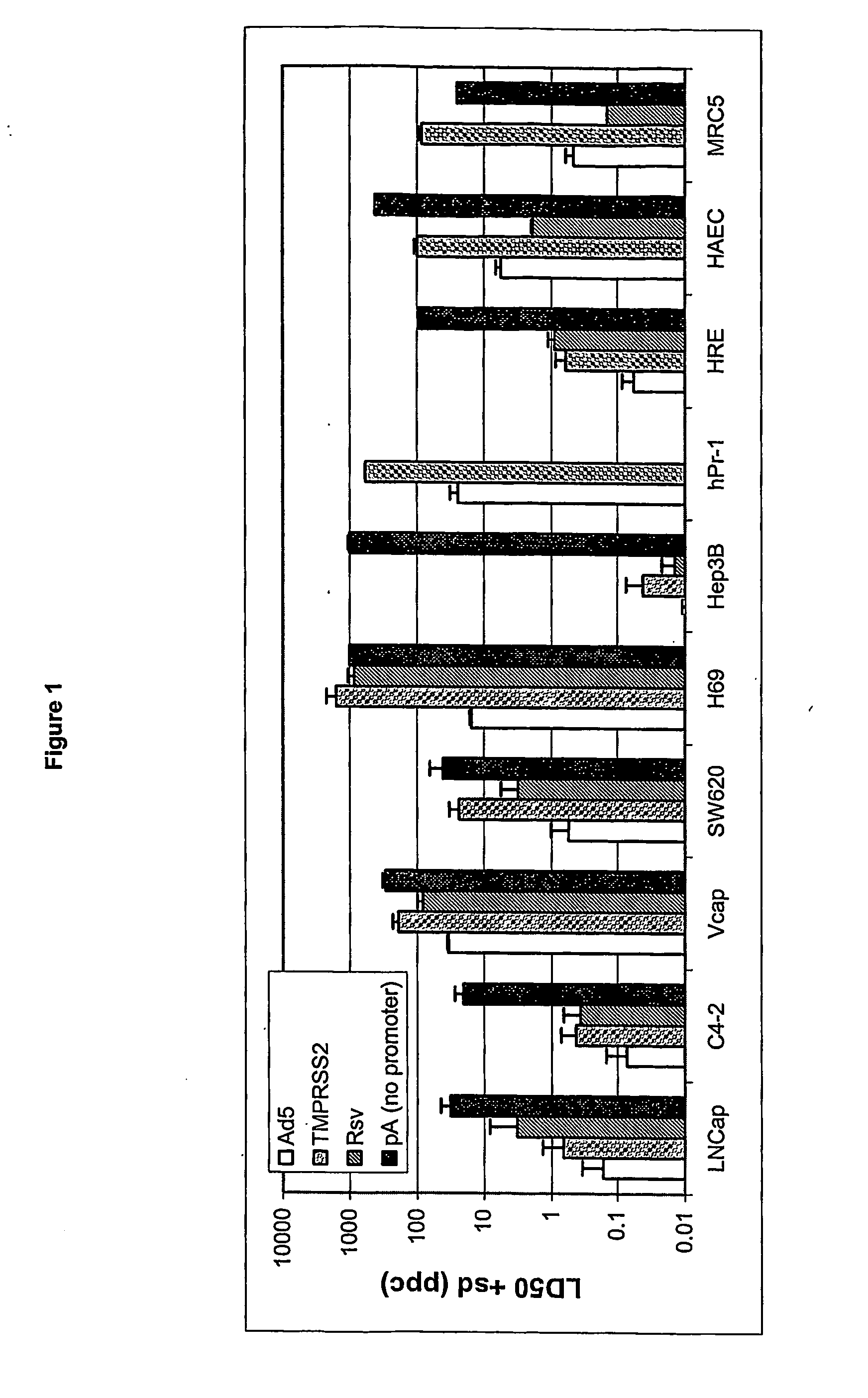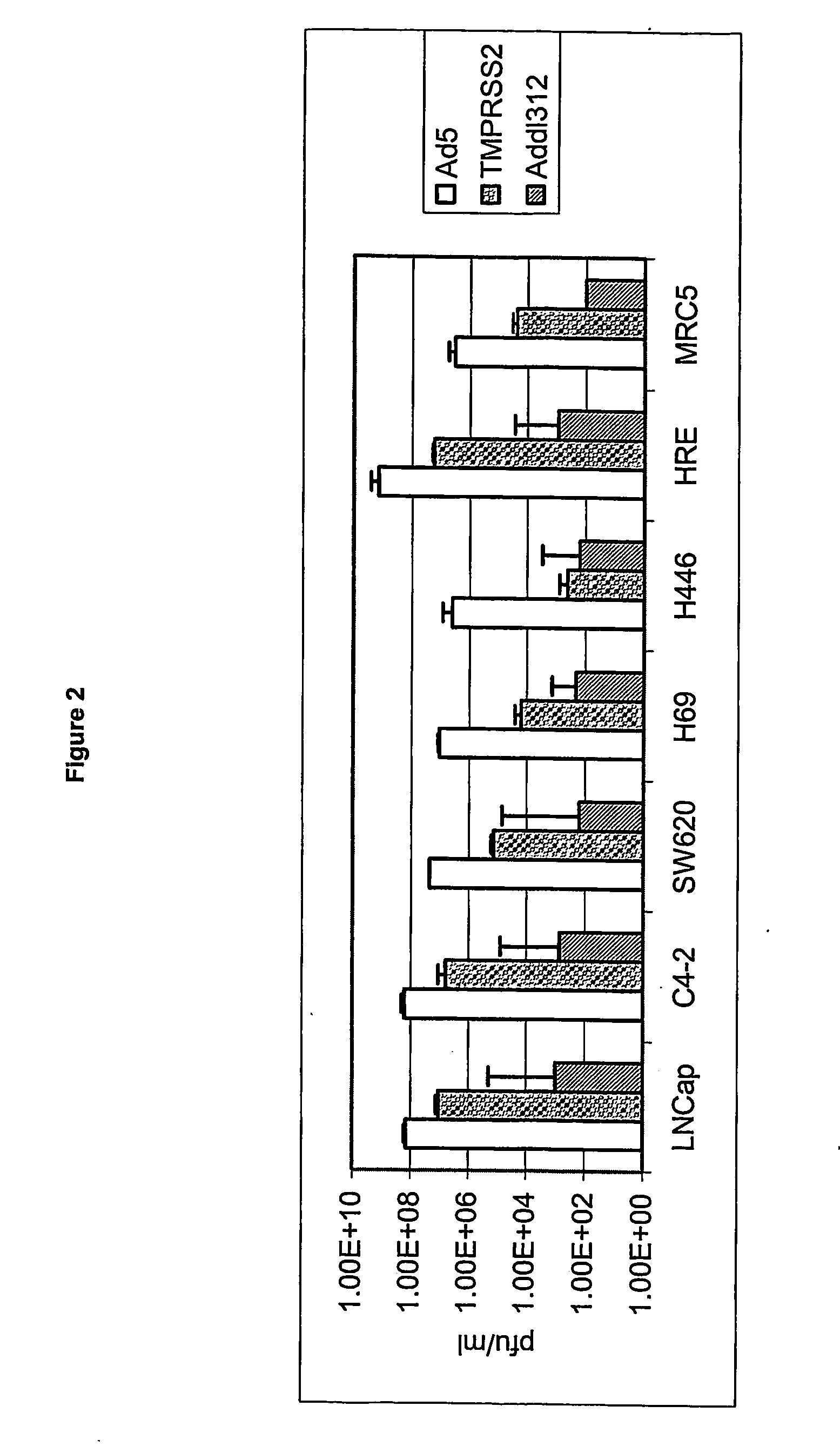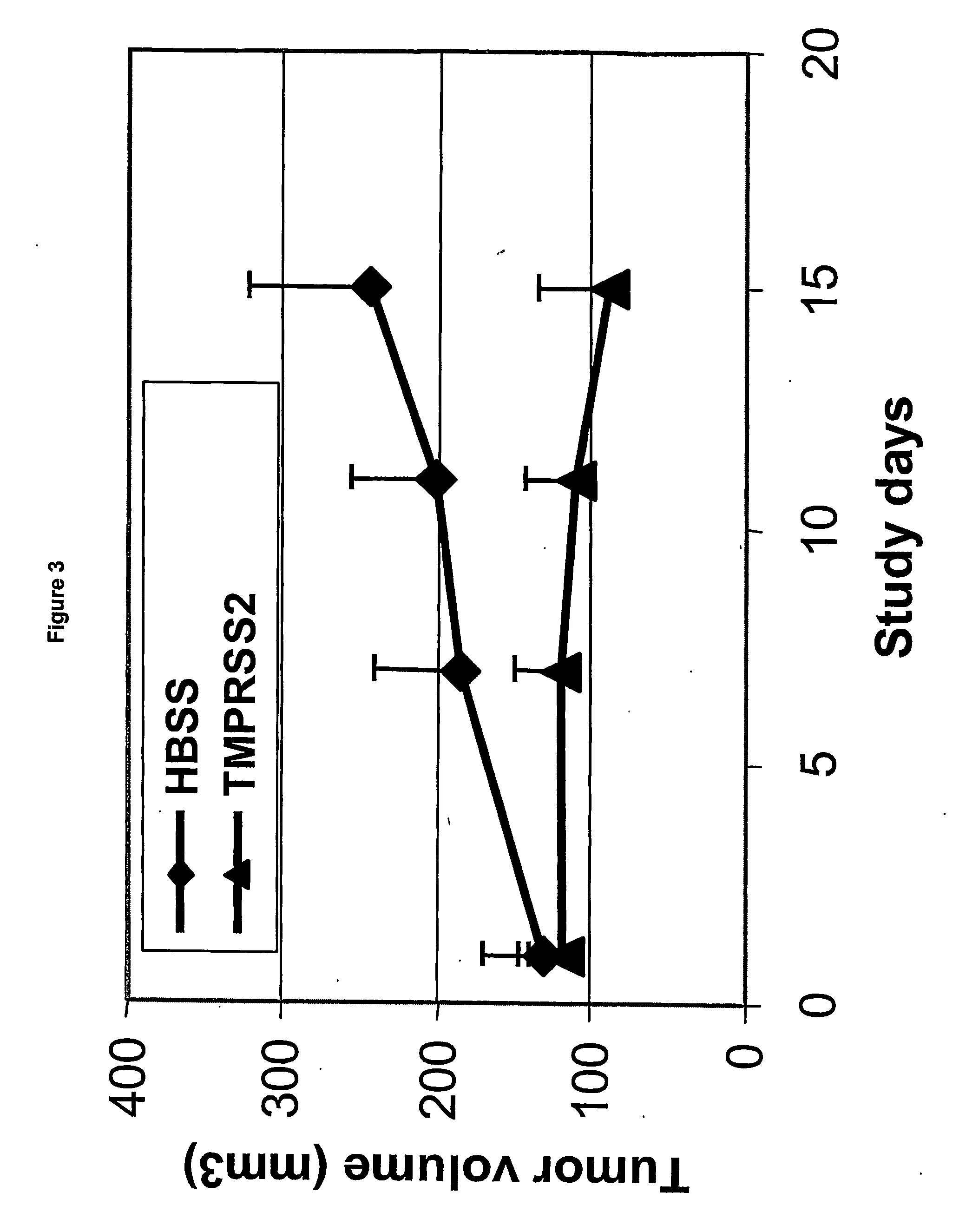Tmprss2 Regulatory Sequences and Uses Thereof
a technology of regulatory sequences and sequences, applied in the field of tmprss2 regulatory sequences, can solve the problems of unaffected normal cell function, clear limitations in both efficacy and toxicity, and high cost of these three diseases, and achieve the effect of selective cytolysis and selective cytolysis of prostate tumor cells
- Summary
- Abstract
- Description
- Claims
- Application Information
AI Technical Summary
Benefits of technology
Problems solved by technology
Method used
Image
Examples
example 1
Identification of Cancer-Specific Genes by Gene Expression Profiling with Tumor / Normal Tissue Microarray Databases
[0172] A tumor / normal tissue microarray database including prostate tumors, normal prostates, colon tumors, normal colons, as well as normal lungs, normal livers, normal kidneys and one normal heart are analyzed. RNA samples were hybridized with more than 200,000 different oligonucleotide probes on Affymetrix human U95A v.2 chips. The transcript levels of more than 8000 known genes in the human genome were profiled for each sample. Differential expression of the genes (expressed as “average difference values”) in tumor and normal tissues is determined using an algorithm that ranks the genes by criteria designed to identify genes that show low to high expression levels in a majority of samples from a cancer of interest, and that show an absence of expression in a majority of samples from non-target tissues. Non-target tissues include matched normal tissue for the particu...
example 2
Validation of Selective Gene Expression in Tumor Target Versus Non-Target and Normal Cell Lines by Semi-Quantitative rt-PCR
[0175] Semi-quantitative rt-PCR was used to validate the differential expression of a candidate gene identified by micro array profiling. cDNA is prepared using RETROscript kit manufactured by Ambion Ltd (Austin, Tex.) from each cell line. Primers used to amplify the TMPRSS2 cDNA were: sense, 5′-CATTGCTACCTCAGTGCTCCTGGAAAC-3′ (SEQ ID NO:4) and antisense, 5′-ACATCTTTCTCTCTTCGCCGCCACC-3′; (SEQ ID NO:5). Multiplex PCR amplification is carried out in which the TMPRSS2 cDNA is co-amplified with ribosomal 18s cDNA in the presence of TMPRSS2-specific primers and 18s-specific primers provided in QuantumRNA 18s Internal Standard kit manufactured by Ambion Ltd (Austin, Tex.). The image intensity of the TMPRSS2 transcript is normalized to the intensity of 18s transcript so that the level of TMPRSS2 expression is semi-quantified and comparable among different cell lines. S...
example 3
Promoter Annotation and Sequence Determination
[0177] Several web-based computational tools are applied to assist the annotation of a promoter in the human genome. An exon map of the gene in the GenBank database (available on the web at http: / / www.ncbi.nih.gov / cgi-bin) is used to determine the 5′ end of an mRNA sequence. The first base pair of the exon 1 sequence usually indicates a transcription start site (TSS). The basal promoter region is generally defined as being within 500 bp upstream of the TSS. To include certain transcription factor binding sites further upstream of the basal promoter sequence, a region containing 1.9 to 2 kb upstream and 100 to 250 bp downstream of the TSS is retrieved from the NCBI human genome database. TMPRSS2 is located in the human genome at Chromosome 21, contig NT—011512. The sequence of the retrieved promoter region is shown as SEQ ID NO: 1.
[0178] To predict the functionality of the retrieved promoter sequence, the sequence was analyzed for basal...
PUM
 Login to View More
Login to View More Abstract
Description
Claims
Application Information
 Login to View More
Login to View More - R&D
- Intellectual Property
- Life Sciences
- Materials
- Tech Scout
- Unparalleled Data Quality
- Higher Quality Content
- 60% Fewer Hallucinations
Browse by: Latest US Patents, China's latest patents, Technical Efficacy Thesaurus, Application Domain, Technology Topic, Popular Technical Reports.
© 2025 PatSnap. All rights reserved.Legal|Privacy policy|Modern Slavery Act Transparency Statement|Sitemap|About US| Contact US: help@patsnap.com



